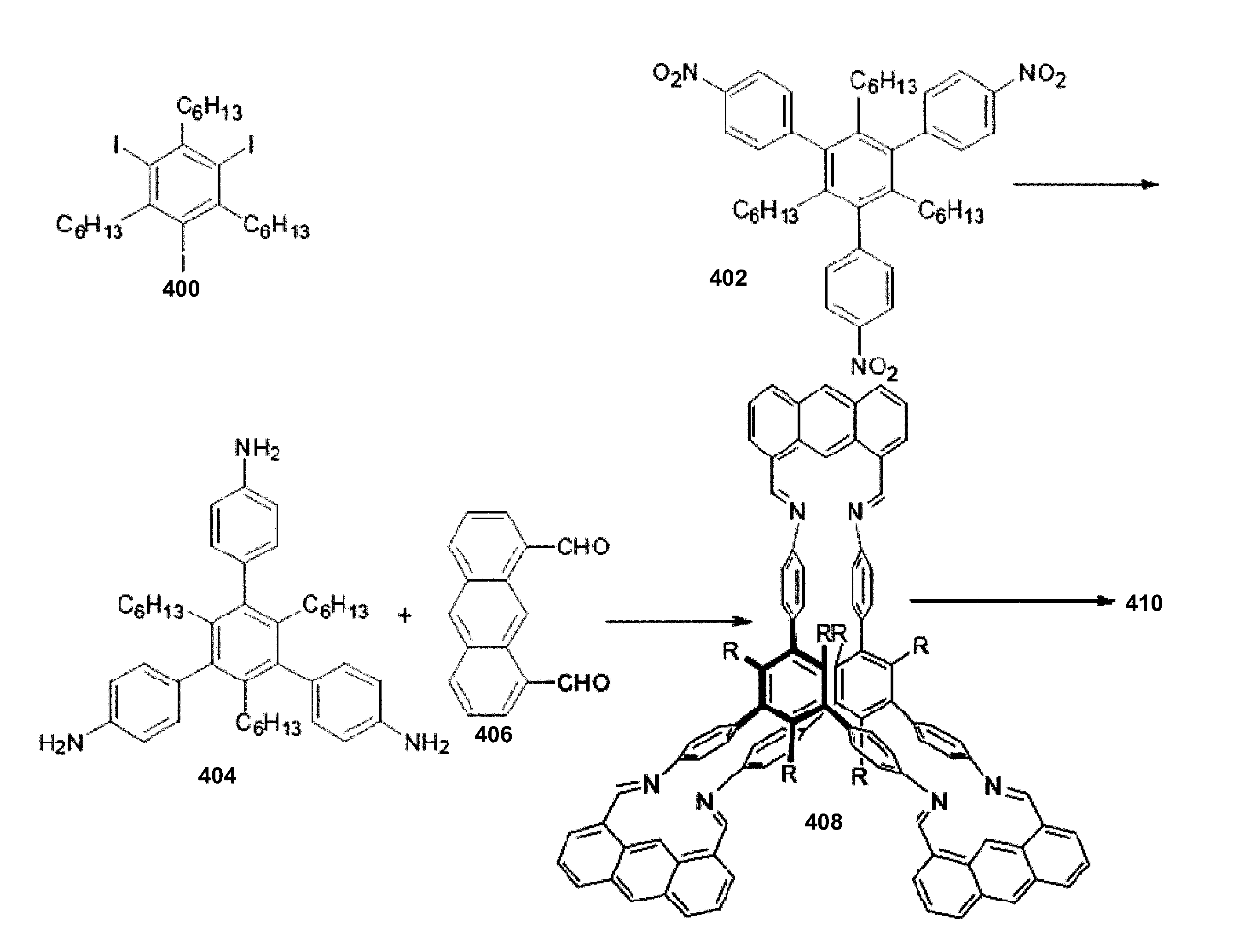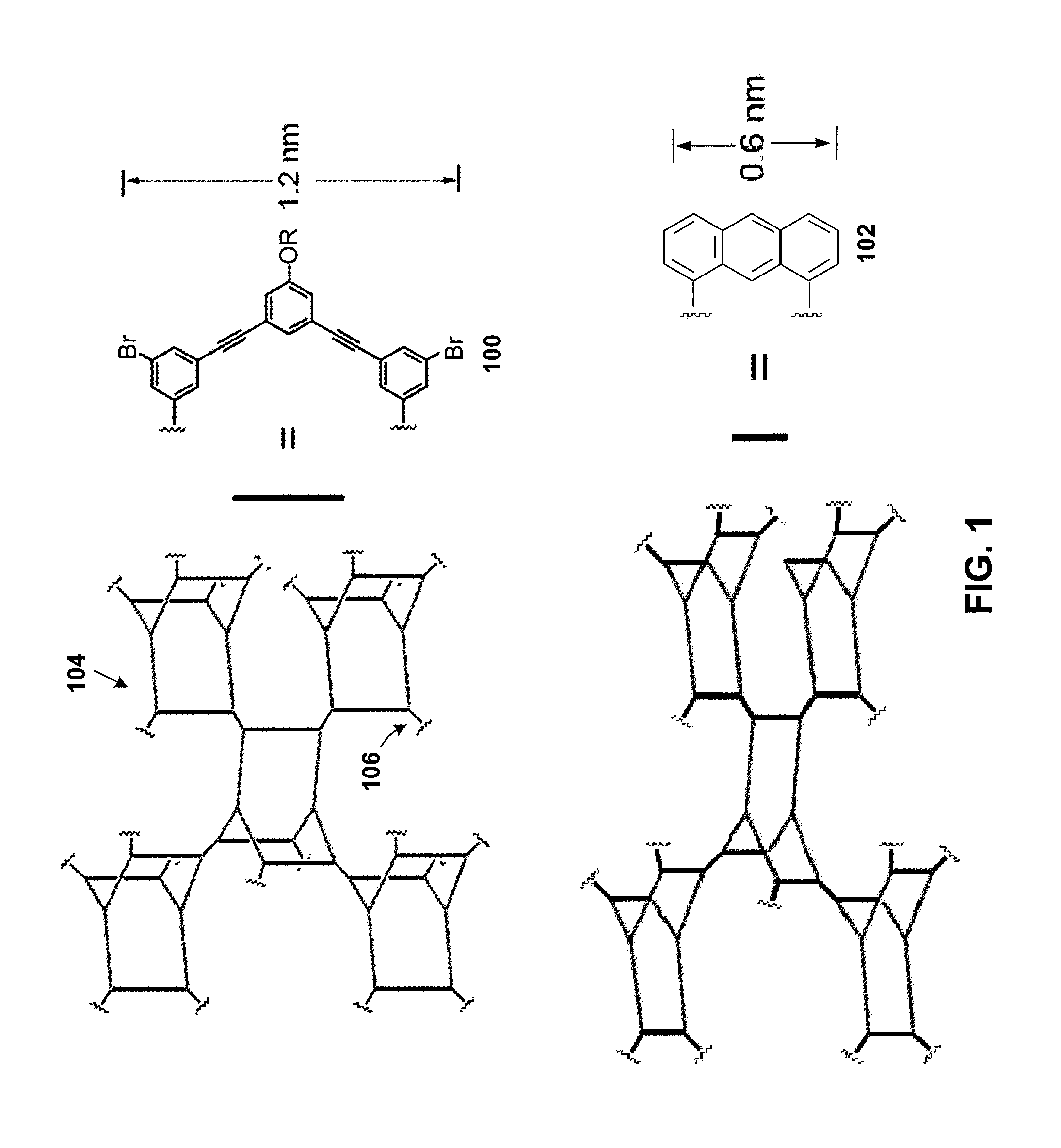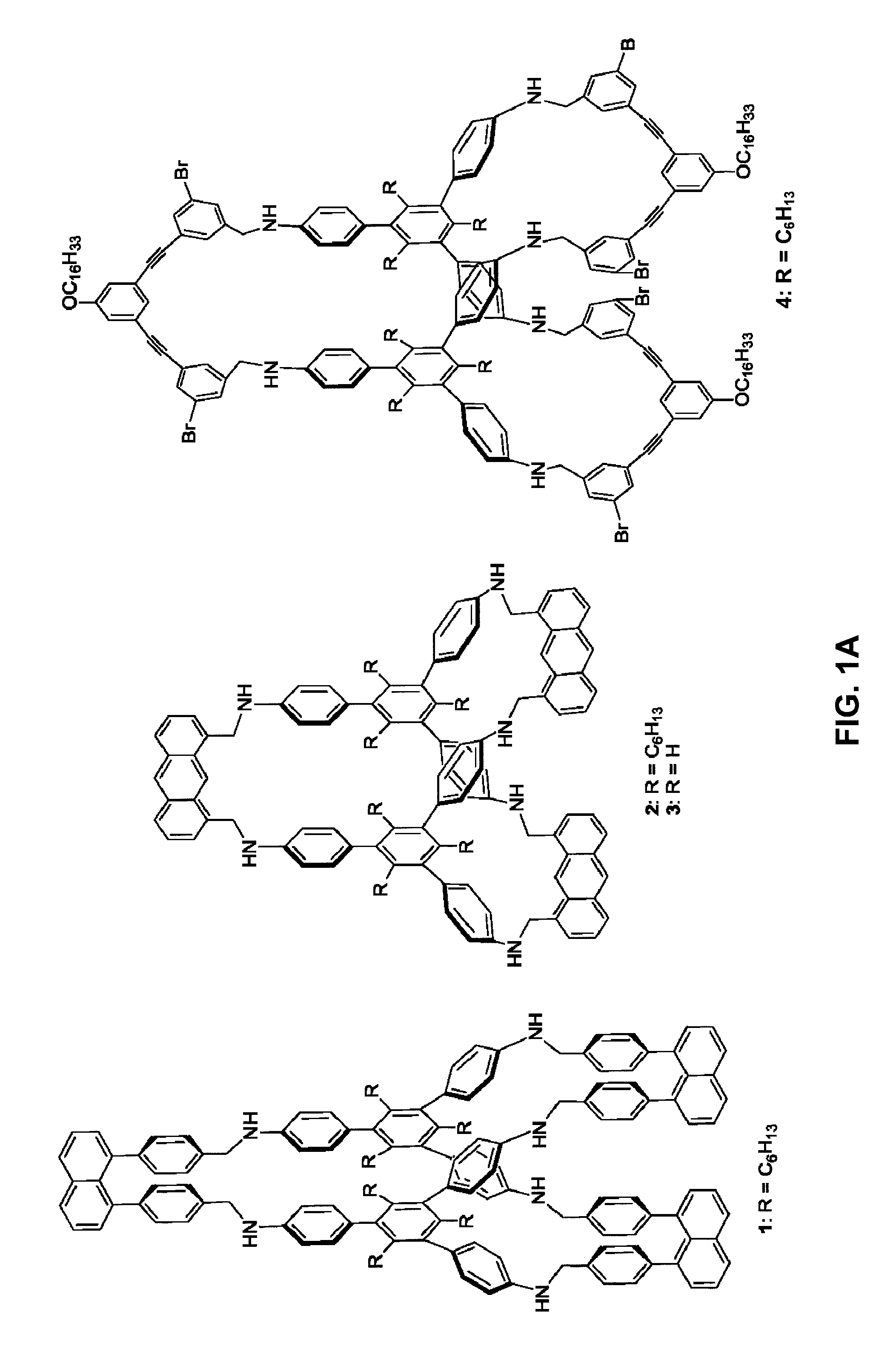Organic Porous Materials Comprising Shape-Persistent Three-Dimensional Molecular Cage Building Blocks
a technology of prismatic molecular cage and organic porous materials, which is applied in the direction of organic chemistry, dispersed particle separation, separation processes, etc., can solve the problems of molecular cage structure defects, molecular cage structure limitations, and high cost of chemical solvents used for gas separation, so as to achieve effective gas separation, improve solubility, and easy to synthesize
- Summary
- Abstract
- Description
- Claims
- Application Information
AI Technical Summary
Benefits of technology
Problems solved by technology
Method used
Image
Examples
example 1
Preparation of Shape-Persistent, Organic, Prismatic Mcbbs
[0121]General experimental aspects, as well as procedures and characterization data thereof, are given below as embodied in the preparation and characterization of cage 1 and for 410 from FIG. 4.
[0122]To a solution of 1,3,5-trihexyl-2,4,6-tris(4-aminophenyl)benzene 11 (362 mg, 0.60 mmol) and 1,8-bis(4-formylphenyl)naphthalene (5) (304 mg, 0.90 mmol) in chloroform (200 mL) was added Sc(OTf)3 (44 mg, 0.090 mmol) in CH3CN (10 mL) dropwise. The yellow solution was stirred at rt for 24 hr. NaBH(OAc)3 (3.81 g, 18.0 mmol) was added, and the yellow suspension was stirred at rt for 5 hr. The mixture was quenched by the addition of saturated NaHCO3 (50 mL), and the organic layer was separated. The aqueous layer was extracted with CHCl3 (3×50 mL) The combined organics were dried over Na2SO4 and concentrated to give the crude product. Purification by flash column chromatography (20% EtOAc in hexane as eluent) yielded the molecular cage 1 ...
example 2
Gas Separation Using MCBBs
[0125]Low pressure gas adsorption measurements were performed using a custom-built stainless steel gas sorption apparatus specifically designed for small (100-200 mg) samples; containing a PX303-015A5V pressure transducer from Omega Engineering Corporation, a 47 mm membrane holder catalogue number XX4404700 from Millipore Corporation, and Swagelok tube fittings and valves. The data was acquired by a ADAC DaqBoard Pci5500MF from Abu Dhabi Airports Company and processed with Labview 7 Express from National Instruments. All samples were placed under vacuum between tests to remove all adsorbed gases, and kept at 20° C. for both adsorption testing and off-gassing phases. CO2 and N2 were used unaltered from Airgas, Inc. in single gas experiments for ideal gas adsorption, no mixed gas studies were performed.
[0126]The following example demonstrates the achievement of CO2 / N2 adsorption selectivity utilizing MCBBs. To demonstrate the potential of compound 410 in CO2 / ...
example 3
Preparation of Polymer-Ceramic Composite Bulk Material Using MCBBs
[0127]The following example demonstrates the potential preparation of bulk material structures comprising MCBB-ceramic composites. As shown in FIG. 6, MCBB 600 is reacted with a silicon-oxide-based linker molecule 602 that contains reactive sites with silicon-hydrogen bonds to ultimately produce a composite bulk material. In one embodiment, an alkene bond of the MCBB reacts with a Si—H bond of 602 through an additional reaction. Additionally, a silicon-oxide-based cage block 604 is reacted with an organic linker 606 that contains a desired functional group linker R to produce a composite material.
PUM
 Login to View More
Login to View More Abstract
Description
Claims
Application Information
 Login to View More
Login to View More - R&D
- Intellectual Property
- Life Sciences
- Materials
- Tech Scout
- Unparalleled Data Quality
- Higher Quality Content
- 60% Fewer Hallucinations
Browse by: Latest US Patents, China's latest patents, Technical Efficacy Thesaurus, Application Domain, Technology Topic, Popular Technical Reports.
© 2025 PatSnap. All rights reserved.Legal|Privacy policy|Modern Slavery Act Transparency Statement|Sitemap|About US| Contact US: help@patsnap.com



